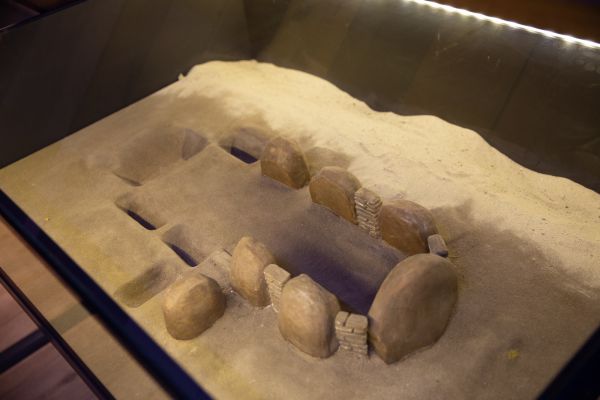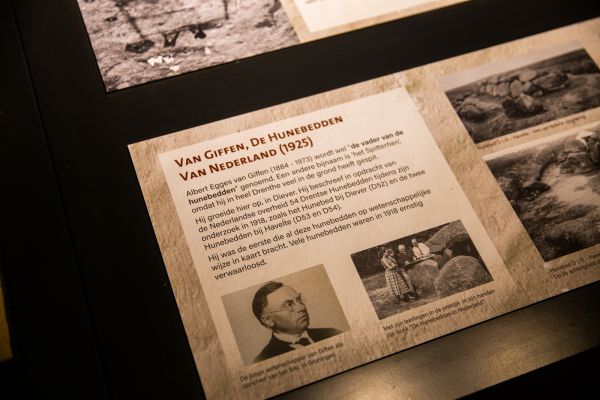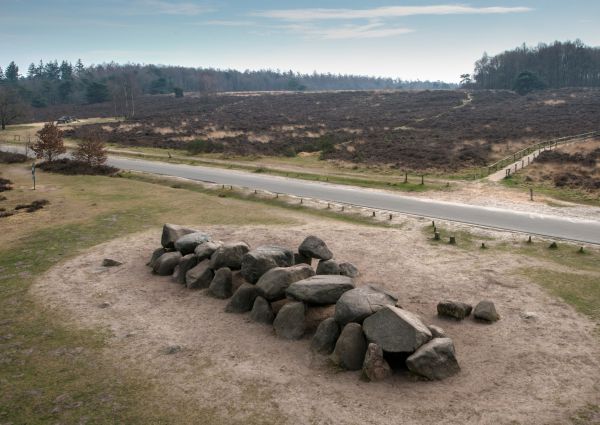The dolmens (or hunebedden in Dutch) are the most famous burial monuments in the Netherlands. They were built around 5,000 years ago (3400 – 2800 BC). The builders of the dolmens belong to the Funnelbeaker culture. The huge stones used to build the dolmens were transported from Scandinavia to the northern Netherlands during the penultimate ice age.

Many of the dolmens were demolished over time and used as foundations for churches and to reinforce dykes. There are still 52 dolmens in Drenthe and two in Groningen. In the OERmuseum you can discover how the dolmens were built.
Three dolmens can be found in Southwest Drenthe: near Diever (dolmen D52) and near Havelte (dolmens D53 and D54). Archaeologist Professor Van Giffen researched and reconstructed these dolmens from 1953 to 1995. Many of these archaeological discoveries are on display in the OERmuseum.
The contents of this dolmen have never been fully examined. The pottery shards that have been collected are from buckets, amphorae, bowls, terrines and funnel cups that show great craftsmanship in its decoration. Sometimes the engravings in the pottery have been filled with a white paste of crushed bone.
In his work ‘The Dolmens in the Netherlands, 1925-1927’, Van Giffen gives a description of the dolmen near Diever: ‘The dolmen is in a complete state of disrepair, so that even some of the major features of the structure are hardly recognisable; the entire structure can therefore no longer be reconstructed. The last traces of an early cap or mantle mound have almost been erased’.

Around 4,100 BC, the Funnelbeaker culture emerged. This culture left behind many visible traces, such as the dolmens. In the OERmuseum, you can see how the dolmens were built. We also organise cycling and walking tours to dolmen D52 in Diever, or you can listen to the ‘Story by the dolmen’.

D53 is the second largest dolmen in Drenthe. It was built around 3300 BC and subsequently used as a burial chamber throughout the Funnelbeaker period. Research has shown that around 135 people were interred in this dolmen. That’s actually not very many, considering how long the dolmen was used. Among the few burnt bone remains, two bear claws were also found, presumably hunting trophies. Van Giffen retrieved over ten baskets of shards of funnel cup pottery from the burial vault. Other finds included beads of amber and jet, and several axes and cremation remains.
The OERmuseum is open from the Easter weekend to the Autumn holidays. And in the Christmas (except for the 25th, 26th and 31st of December and the 1st of January) and Spring holidays, from 13:30 to 17:00 hours Tuesdays to Sundays.
ADDRESS & CONTACT
Brink 7, 7981 BZ Diever
General information:
mail@oermuseum.nl
Business contacts:
Bart Friso +31(0)6-2680 2024
beheer@oermuseum.nl